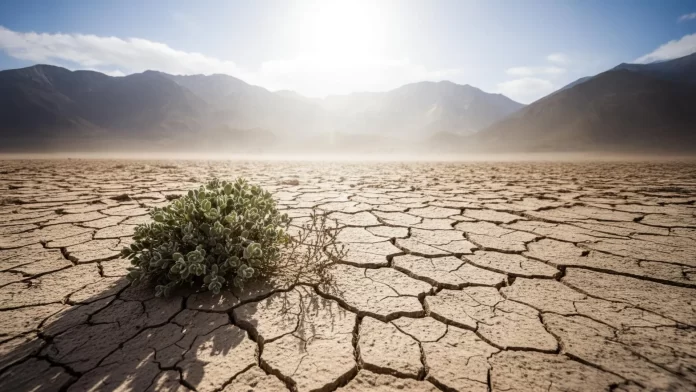In California’s Death Valley, where summer heat often surpasses 120 degrees Fahrenheit, survival appears almost impossible. Yet, among the cracked soil and intense sunlight, one native plant not only endures but flourishes.
That plant, Tidestromia oblongifolia, has helped scientists at Michigan State University reveal how life can persist in such extreme conditions. Their findings offer a potential guide for developing crops that can survive in an increasingly hot climate.
In a study published in Current Biology, Research Foundation Professor Seung Yon “Sue” Rhee and Research Specialist Karine Prado report that T. oblongifolia actually grows more quickly under Death Valley’s summer conditions. The plant accomplishes this by fine-tuning its photosynthetic system to resist the damaging effects of heat.
A Plant That Grows Stronger in the Heat
For Prado, the project began with a simple question: how can this plant remain green and healthy when most others would wither within hours?
“When we first brought these seeds back to the lab, we were fighting just to get them to grow,” Prado said. “But once we managed to mimic Death Valley conditions in our growth chambers, they took off.”
Working with colleagues in the Rhee lab at MSU’s Plant Resilience Institute, Prado used custom-built growth chambers to reproduce the desert’s harsh light and extreme daily temperature shifts. The results were astonishing. In just 10 days, T. oblongifolia tripled its biomass. Meanwhile, other related species known for their heat tolerance stopped growing entirely.
The World’s Most Heat-Tolerant Plant
After only two days in extreme heat, T. oblongifolia expanded its photosynthetic comfort zone, allowing it to keep producing energy efficiently. Within two weeks, its optimal photosynthetic temperature rose to 45 degrees Celsius (113 degrees Fahrenheit) — higher than that of any major crop on record.
“This is the most heat-tolerant plant ever documented,” Rhee said. “Understanding how T. oblongifolia acclimates to heat gives us new strategies to help crops adapt to a warming planet.”
How the Desert Survivor Works
Using a combination of physiological tests, live imaging, and genomic analysis, the research team uncovered how T. oblongifolia coordinates multiple biological systems to survive.
Under Death Valley-level heat, the plant’s mitochondria — the structures that generate energy — move closer to the chloroplasts, where photosynthesis occurs. At the same time, the chloroplasts reshape into distinctive “cup-like” forms never before observed in higher plants. These adaptations may help the plant capture and recycle carbon dioxide more efficiently, maintaining energy production even under stress.
Within 24 hours of heat exposure, thousands of genes adjust their activity. Many are involved in shielding proteins, membranes, and photosynthetic machinery from damage. The plant also increases production of an enzyme known as Rubisco activase, which helps keep photosynthesis functioning smoothly at high temperatures.
Lessons for Future Agriculture
With global temperatures expected to rise by as much as 5 degrees Celsius by the end of the century, extreme heat is already reducing yields for essential crops like wheat, maize, and soybeans. As the global population grows, scientists are racing to find ways to sustain food production.
“T. oblongifolia shows us that plants have the capacity to adapt to extreme temperatures,” Rhee said. “If we can learn how to replicate those mechanisms in crops, it could transform agriculture in a hotter world.”
Learning From Nature’s Toughest Survivors
For decades, plant biology has centered on model species that are easy to cultivate, such as Arabidopsis, rice, and maize. Rhee believes it is time to look beyond these familiar plants and study species that have evolved to endure the world’s harshest environments.
“Desert plants have spent millions of years solving the challenges we’re only beginning to face,” she said. “We finally have the tools, such as genomics, high-resolution live imaging and systems biology, to learn from them. What we need now is broader support to pursue this kind of research.”
Her lab is already applying these insights, studying how the genes and cellular structures that give T. oblongifolia its extraordinary resilience might be used to make food crops more heat-tolerant.
“This research doesn’t just tell us how one desert plant beats the heat,” Prado said. “It gives us a roadmap for how all plants might adapt to a changing climate.”



